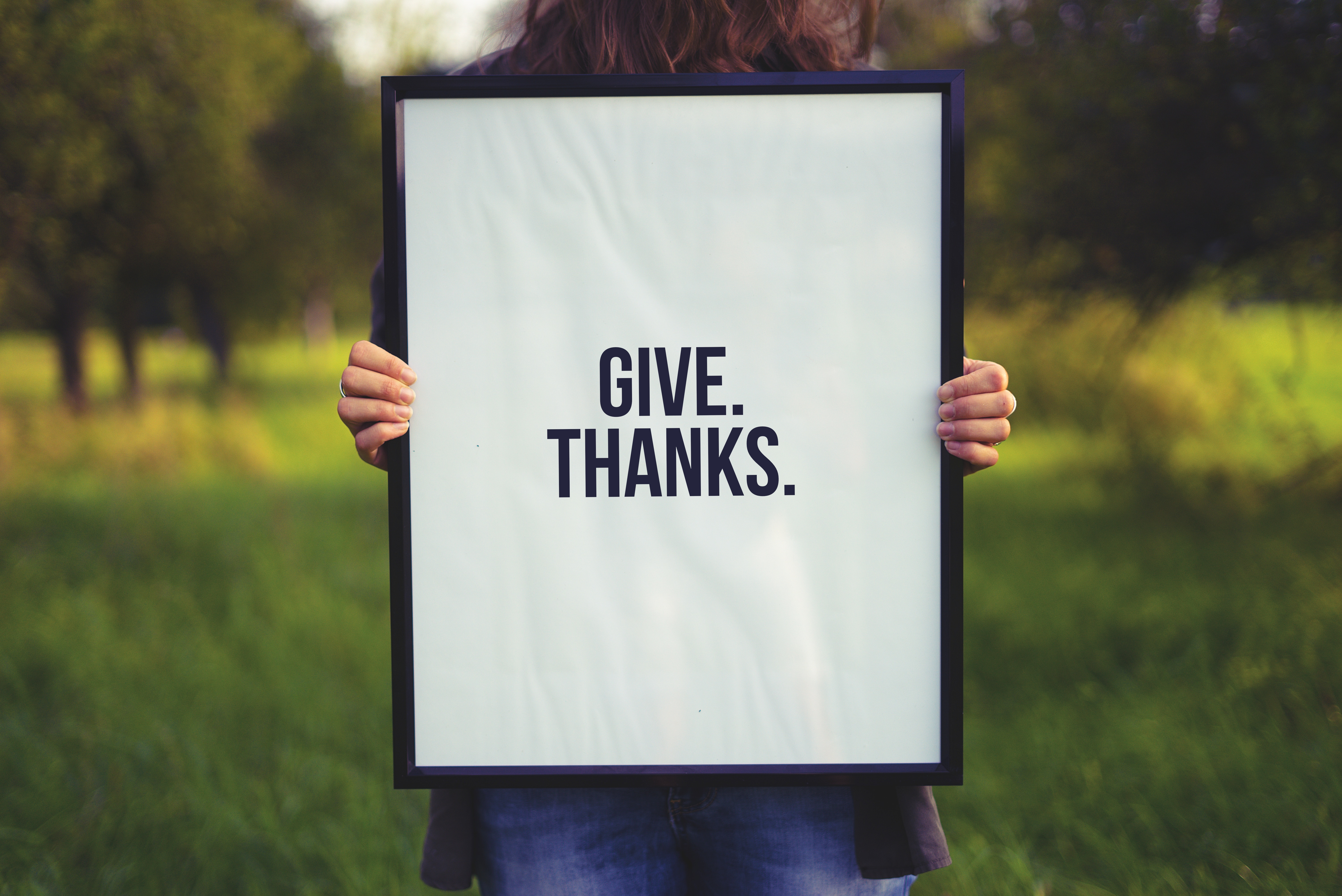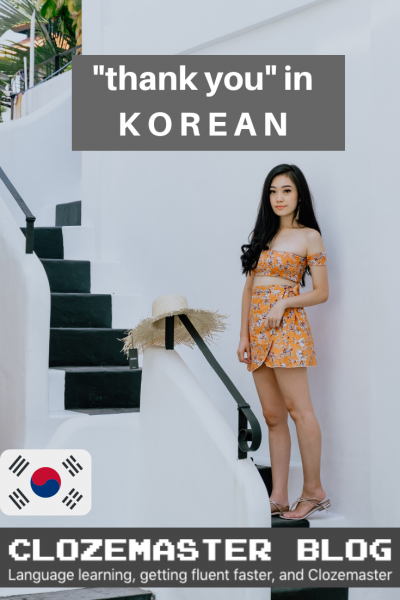
감사합니다가 바로 그 문구 중 하나입니다. 말하는 사람과 듣는 사람 모두를 행복하게합니다. 감사의 마음을 표현하는‘감사합니다’라는 말은 누군가의 선행을 인정해 준 것에 대해 행복감을 느끼게하고, 마찬가지로 당신의 도움에 감사하는 것은 그 사람이 감사하는 마음을 갖게합니다. 한국어로 Thank you는 같은 용도로 사용되며, 영어와 비슷하게 감사합니다를 한국어로 표현하는 방법이 여러 가지가 있으므로 알아 보겠습니다.
이 기사에서는 한국에서 감사의 말을 할 때 세 단계의 형식을 살펴보세요 그런 다음 한국어로 “감사합니다”라고 말하는 사람에 대한 응답으로 사용할 수있는 몇 가지 유용한 문구를 학습하도록 도와드립니다.
한국어로 감사합니다를 말하는 두 가지 공식적인 방법
한국어로 감사하는 말에는 두 가지 표준 방식이 있습니다.
- 감사합니다 (감사함니다),
- 고맙습니다 (go-map -seup-ni-da).
둘 다 같은 의미이며 둘 다 매우 일반적으로 사용됩니다.
사용시기
이런 표현은 익숙하지 않은 사람이나 조직 내에서 연로하거나 선배 인 사람에게 감사를 표할 때 사용합니다. 그래서 낯선 사람에게 한국어로 감사합니다라고 말하고 싶다면 , 조부모님이나 직장 사장님에게 감사합니다. 또는 고맙습니다.
둘 다 같은 뜻으로 한국에서 일반적으로 사용되지만 사람들은 종종 감사합니다. 고맙습니다. 그래서 공식적인 상황에서 감사합니다라고 말하고 싶을 때 고맙습니다보다 감사합니다라고 말하는 것이 좀 더 흔합니다.
더 격식적인 감사합니다(하지만 거의 사용하지 않음)
이제 일반 한국어 학습자는이 말을하지 않을 것 같지만 실제로는 한국어로 감사합니다라고 말하는 훨씬 더 공식적인 방법이 있습니다.
- 대단히 감사합니다 (de-dan-hi gam-sa-ham-ni-da).
의미
대단히의 뜻은 very much, greatly, 그리고이 단어가 감사합니다 감사합니다와 결합하여 대단히 감사합니다.이 단어는 정말 감사합니다또는 정말 감사합니다라는 뜻입니다. 대단히 감사합니다와 많이 쓰이지 만 고맙습니다와는 거의 쓰지 않습니다.
언제 사용
좋아요, 그럼 언제 사람들이 정말 감사합니다. 어떤 상황에서 사람들이 이렇게 공식적인 감사의 말을 한국어로 말하겠습니까?
이제 여러분이 부동산 중개인이고 오픈 하우스를 개최한다고 상상해보세요. 많은 사람들이 나타나지 않았지만 갑자기 첫 번째 고객이 왔습니다. 한국어로‘와 주셔서 대단히 감사합니다’라고하면‘와 주셔서 대단히 감사합니다.’라고 말할 수 있어요. (와주 슈서 감사함니다) 와 주셔셔는 와 주셔서또는 오셨 기 때문에라는 뜻으로 와 주셔서 대단히 감사합니다라는 뜻입니다.
한국어로 감사합니다를 정중하게 표현
한국어로 감사합니다를 표현하는 공식적인 표현은 두 가지가 있지만 그 중 하나만 감사합니다라는 정중 한 표현으로 활용 될 수 있습니다.
고맙습니다를 …로 바꿀 수 있습니다.
p>
- 고마워요 (go-ma-wo-yo).
사용시기
감사합니다. 한국어로. 그런데‘고마워요’는 용도가 제한되어 있어요. 친구와 함께 사용하기에는 너무 형식적이며, 방금 만난 사람, 당신보다 나이가 많은 사람, 조직에서 당신보다 계급이 높은 사람과 함께 사용하기에 충분히 형식적이고 예의가 없습니다.
그럼 언제 고마워요를 사용할 수 있나요? 고마워요는 직장에서 예의 바르고 존경심을 유지하는 것이 중요하기 때문에 익숙하거나 업무 환경에서 당신과 같은 수준의 동료들과 흔히 사용됩니다. 고마워요를 몇 번 만났고 같은 나이의 사람들과 함께 사용할 수도 있고, 공손하고 싶어서 당신보다 어린 사람들에게 고마워요를 사용할 수도 있습니다.
캐주얼 한국어로 감사합니다
한국어를 말할 때 격식있는 언어와 정중 한 언어를 사용해야 할 때를 아는 것이 중요합니다. 하지만 언제 캐주얼 한 언어를 사용해야하는지 아는 것도 중요합니다. 고맙습니다. 고맙습니다. 고맙습니다. 고맙습니다. 고맙습니다. 고맙습니다. 고맙습니다. 고맙습니다. 한국어로 감사합니다라는 평범한 형태로 만들 수 있는데 …
- 고마워 (go-ma-wo).
사용시기
고마워는 캐주얼하고 비공식적이며 감사를 의미합니다. 이 캐주얼 한 한국어를 반말(ban-mal)이라고도합니다.
반말은 친구 나 형제 자매 등 친한 사람들에게만 사용되는 언어입니다. 반말은 함께 사용하지 말아야 할 사람들과 함께 사용할 때 매우 무례한 모습을 보일 수 있습니다. 고마워는 당신보다 어린 사람들에게도 사용되지만 당신이 그들에게 익숙하거나 당신보다 어린 사람이 아이 일 때만 사용됩니다. 고마워는 두 사람의 나이 차이가 크더라도 서로 잘 모르는 두 성인 사이에서는 절대 사용하지 않습니다. 이미 언급했듯이 매우 무례 할 수 있고 한국 사람들과 대화 할 때 존중하는 것이 중요하기 때문입니다.
Modifying ‘thank you’ in Korean
We’ve already learned to modify 감사합니다 with 대단히, but 대단히 is very formal, and it’s only used to modify the formal thank you 감사합니다 – and quite frankly, an average Korean learner is unlikely to use this word.
However, we can also modify the polite form 고마워요, the casual form 고마워, and the formal 감사합니다 and 고맙습니다 with the words 정말 (jung-mal) which means ‘really’. So we can say:
- (Formal) 정말 감사합니다/고맙습니다 – really thank you,
- (Polite) 정말 고마워요 – really thank you,
- (Casual) 정말 고마워 – really thanks.
Additionally, we can use modifiers ‘진짜‘ (jin-Jja) which also means ‘really’:
- (Formal) 진짜 감사합니다/고맙습니다 – really thank you,
- (Polite) 진짜 고마워요 – really thank you,
- (Casual) 진짜 고마워 – really thanks.
And ‘너무‘ (neo-mu), meaning ‘too’:
- (Formal) 너무 감사합니다/고맙습니다 – thank you so much,
- (Polite) 너무 고마워요 – thank you so much,
- (Casual) 너무 고마워 – thank you so much.
Although the English ‘too’ is often used to express something negative, as in ‘too expensive’ or ‘too hot’, this use of ‘너무’ in Korean is used to express that someone feels grateful very much.
Now, so far we’ve learned the two forms of thank you in Korean 감사합니다 and 고맙습니다, the three different levels of formality and how we can conjugate 고맙습니다, and the modifiers we can use with ‘thank you’ in Korean. Let’s now look at how we can respond to someone saying ‘thank you’.
‘You’re welcome’ in Korean
If you type, ‘you’re welcome’ in a dictionary, you will learn that the Korean version of ‘you’re welcome’ is…
- 천만에요 (chun-man-ae-yo).
천만에요 is a VERY formal way of responding to someone saying thank you, and unless you’re in an incredibly formal setting, you’re unlikely to use this phrase – even Koreans rarely use this phrase.
A more common, yet still formal way of responding to someone saying ‘thank you’ is…
- 별말씀을요 (byul-mal-sseum-eul-yo).
‘별말씀을요’ means ‘don’t mention it’. This phrase is formal and more commonly used than 천만에요.
Finally, the most commonly used response to ‘thank you’, which is less form, but a polite response, is…
- 아니에요 (a-ni-ae-yo).
‘아니에요’ means ‘not at all’, and of all the three phrases, this is the most commonly used expression when responding to ‘thank you in Korean’, mainly because it can be used in less formal settings.
So the three responses to thank you are:
- (Formal) 천만에요 – you’re welcome,
- {Formal} 별말씀을요 – don’t mention it,
- (Polite) 아니에요 – not at all.
Great, before we end this article on ways to say ‘thank you’ in Korean, here’s a bonus expression. When someone offers something, and we want to say ‘no’, in English it’s common to say ‘no thank you’. So how do we say this in Korean?
‘No, thank you’ in Korean
In Korean, there are two common ways to say ‘no thank you’ and one of them we’ve learned already.
The first way to say ‘no thank you’ is…
- 아니에요 (a-ni-ae-yo).
아니에요, which we can use in response to someone saying ‘thank you’, can also be used to say ‘no, thank you’. 아니에요 is the polite form, and we can conjugate it to a more formal form ‘아닙니다’ (a-nim-ni-da).
The second way of saying ‘no thank you’ in Korean is…
- 괜찮아요 (gwen-chan-ah-yo).
괜찮아요 means ‘that’s okay’. This expression can also be conjugated to 괜찮습니다 (gwen-chan-seum-ni-da) to become a more formal form.
The two forms of ‘no, thank you’ are commonly used, and you can use the formal and less formal forms, depending on who you’re speaking to.
Wrap up!
So in Korean, there are four levels of formality when saying thank you in Korean.
- Formal thank you: 감사합니다, 고맙습니다.
- Polite thank you: 고마워요
- Casual thank you: 고마워
It’s very important that you know which one to use with whom, as it can save you from a potential embarrassment for yourself, and from offending someone unintentionally.
We also learned a super formal way of saying ‘thank you’ in Korean – 대단히 감사합니다.
Then, we learned three ㅡ modifiers we can use to emphasize how thankful we are. And lastly, we learned three ways of saying ‘you’re welcome’ and two ways of saying ‘no, thank you’ in Korean as well.
Remember, practice is everything when learning a language – so don’t forget to practice Korean daily with the Clozemaster app! 감사합니다 for reading this article!
Learn Korean in context with Clozemaster
Clozemaster has been designed to help you learn the language in context by filling in the gaps in authentic sentences. With features such as Grammar Challenges, Cloze-Listening, and Cloze-Reading, the app will let you emphasize all the competencies necessary to become fluent in Korean.
Take your Korean to the next level.실제 한국어 문장으로 연습하려면 여기를 클릭하세요!
